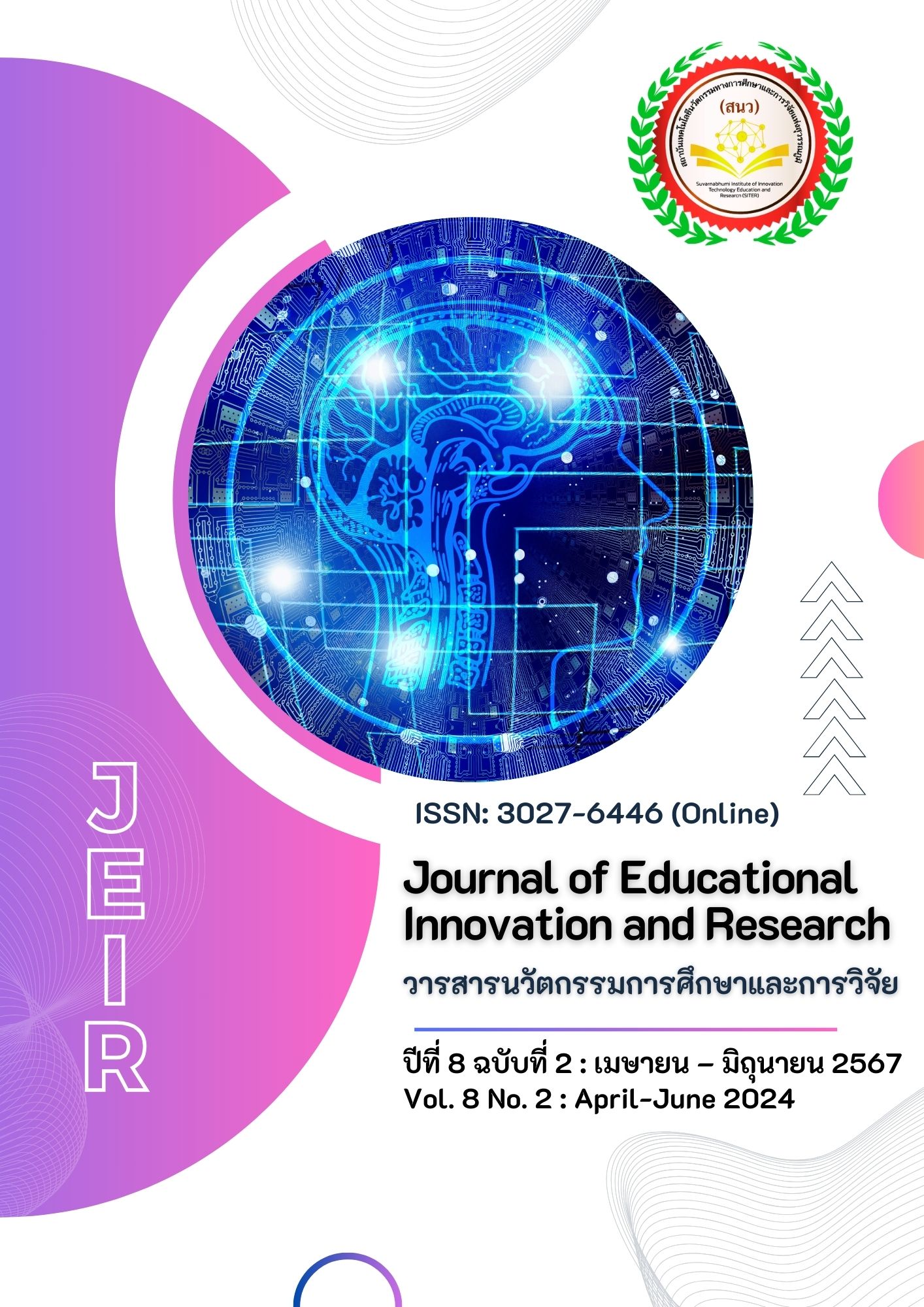การศึกษาการคิดเชิงอภิปัญญาในการแก้ปัญหาทางคณิตศาสตร์ ของนักเรียนชั้นประถมศึกษาปีที่ 3 เรื่อง การบวก ลบ คูณ หารระคน โดยใช้วิธีการแบบเปิด
Main Article Content
บทคัดย่อ
การวิจัยครั้งนี้มีวัตถุประสงค์ 1) เพื่อศึกษาแนวทางการจัดการเรียนรู้คณิตศาสตร์โดยใช้วิธีการแบบเปิด และ 2) เพื่อศึกษาการคิดเชิงอภิปัญญาในการแก้ปัญหาทางคณิตศาสตร์ของนักเรียนชั้นประถมศึกษาปีที่ 3 หลังการจัดกิจกรรมการเรียนรู้โดยใช้วิธีการแบบเปิด เรื่อง การบวก ลบ คูณ หารระคน กลุ่มตัวอย่าง คือ นักเรียนชั้นประถมศึกษาปีที่ 3/1 ปีการศึกษา 2564 จำนวน 12 คน เครื่องมือที่ใช้ในการวิจัย คือ 1) แผนการจัดการเรียนรู้โดยใช้วิธีการแบบเปิด 2) แบบทดสอบวัดการคิดเชิงอภิปัญญาวิชาคณิตศาสตร์ วิเคราะห์ข้อมูลโดยใช้ค่าร้อยละ ค่าเฉลี่ย และการวิเคราะห์เชิงเนื้อหา
ผลการวิจัยพบว่า 1) แนวทางการจัดการเรียนรู้โดยการใช้วิธีการแบบเปิดที่ส่งเสริมการคิดเชิงอภิปัญญาสำหรับนักเรียนชั้นประถมศึกษาปีที่ 3 เรื่อง การบวก ลบ คูณ หารระคน ครูควรใช้สถานการณ์ปัญหาหรือคำถามปลายเปิดที่สอดคล้องหรือเชื่อมโยงกับชีวิตประจำวันของนักเรียนมีบริบทที่หลากหลาย เหมาะสมกับวัยของนักเรียนชั้นประถมศึกษาปีที่ 3 ควรเรียบเรียงการไต่ระดับของปัญหาหรือคำถามจากง่ายไปยาก และครูควรเตรียมความพร้อมให้นักเรียนคุ้นเคยกับการแก้ปัญหาทางคณิตศาสตร์ เตรียมความพร้อมในด้านความรู้ เช่น เรื่อง การบวก การลบ การคูณ และการหาร หรือเนื้อหาที่นักเรียนเคยเรียนมาก่อนหน้านี้ รวมทั้งครูควรใช้คำถามเพื่อกระตุ้นการคิดของนักเรียนให้เกิดการเรียนรู้ในแต่ละขั้นตอนของการแก้ปัญหา ซึ่งจะช่วยส่งเสริมให้นักเรียนเกิด การคิดเชิงอภิปัญญาในการแก้ปัญหาทางคณิตศาสตร์ และ 2) การคิดเชิงอภิปัญญาในการแก้ปัญหาทางคณิตศาสตร์ เรื่อง การบวก ลบ คูณ หารระคน ของนักเรียนชั้นประถมศึกษาปีที่ 3 หลังจากจัดกิจกรรมการเรียนรู้โดยใช้วิธีการแบบเปิดอยู่ในระดับสูง คิดเป็นร้อยละ 66.67 ของนักเรียนทั้งหมด และนักเรียนมีการคิดเชิงอภิปัญญาในการแก้ปัญหาทางคณิตศาสตร์ในพฤติกรรมด้านการอ่านและด้านการสำรวจข้อมูลมากที่สุด ซึ่งมีคะแนนเฉลี่ยเท่ากับร้อยละ 82.22
Article Details

อนุญาตภายใต้เงื่อนไข Creative Commons Attribution-NonCommercial-NoDerivatives 4.0 International License.
เอกสารอ้างอิง
Beyer, B.K. (1987). Practical Strategies for Teaching of Thinking. Allyn and Bacon.
Flavell, J.H. (1976). Metacognitive of Problem Solving. In L.Resnick (Ed.), The Nature of Intelligence (231-236). Erlbaum.
Inprasitha, M. (2004). Teaching Using an Open Approach Method in Japanese Mathematics Classes. Faculty of Education. Khon Kaen University.
Isoda, M., & Nakamura, T. (2010). Mathematics Education Theories for Lesson Study: Problem Solving Approach and the Curriculum through Extension and Integration. Journal of Japan Society of Mathematical Education, 92, 5.
Khaemanee, T. (2001). Thinking Science. Institute of Academic Development
Ministry of Education. (2001). Research synthesis on learning management model at Student-centered learning. Department of Academic Affairs.
Naoyenpon, P. (2001). Mathematics Teaching and Learning Activities Though Open-ended Problem Solving for Mathayom Suksa I Students [Doctor’s Thesis, Srinakharinwirot University].
Tasarin, P. (2002). Scientific Values in Metacognition Processes[Master’s Thesis, Khon Kaen University].
Thipkong, S. (2010). Mathematics Problem Solving. Kurusapa Printing Ladphrao.
Thobumrung, T. (2007). A Study of Metacognition in Mathematical Problem Solving Through Students expository Writing [Master’s Thesis, Khon Kaen University].


